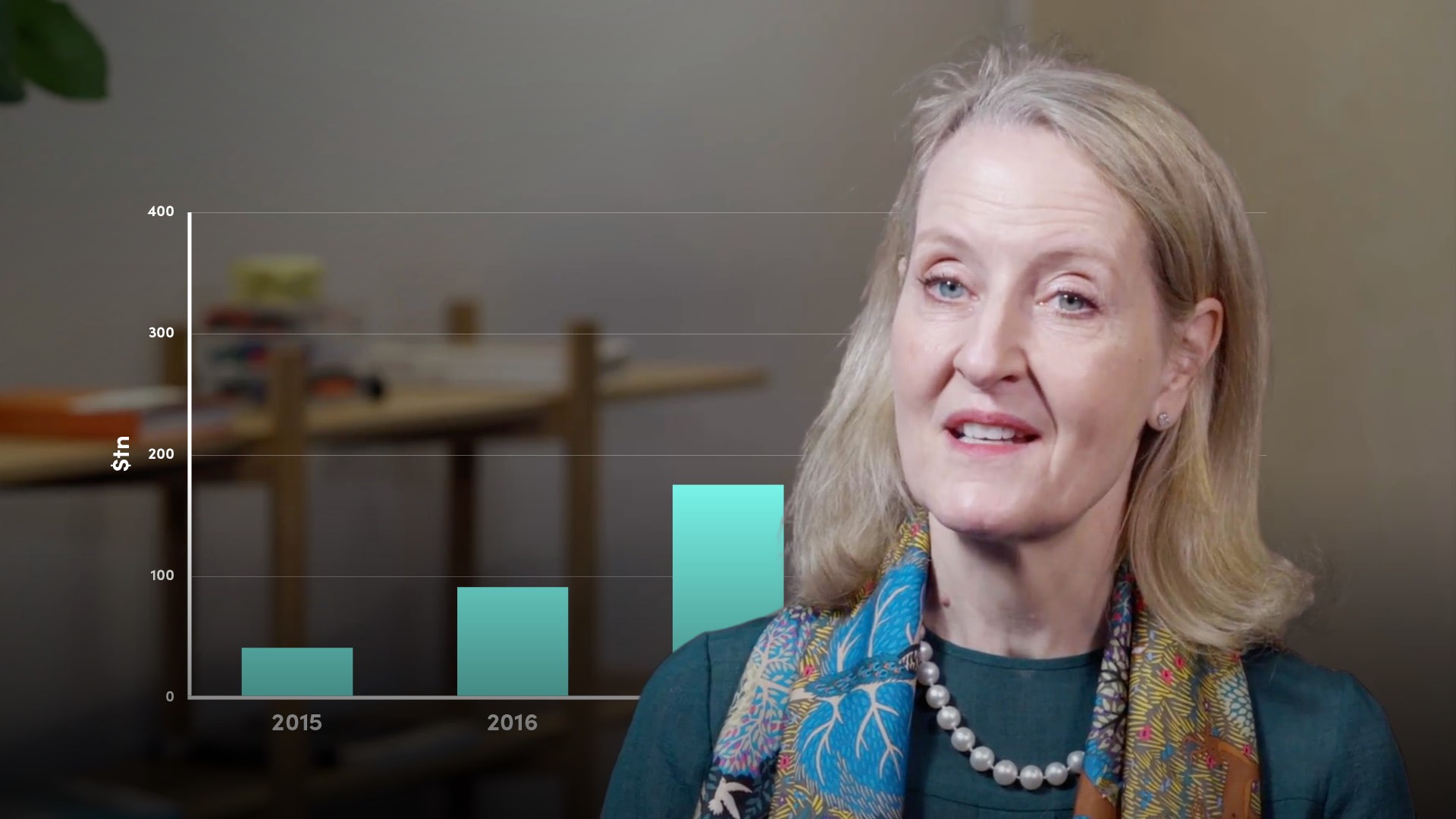
Green Bond Principles

Stephanie Sfakianos
35 years: Sustainable finance & banking
In the second part of Stephanie's video on Green Finance Markets, she discusses the green bond market and evaluates its impact.
In the second part of Stephanie's video on Green Finance Markets, she discusses the green bond market and evaluates its impact.
Subscribe to watch
Access this and all of the content on our platform by signing up for a 7-day free trial.

Green Bond Principles
8 mins 52 secs
Key learning objectives:
Outline the four pillars of the GBP
Understand the ways the green bond market has been successful
Identify the key debate points that continue to trouble the green bond market
Understand where the developments are going to come from
Overview:
Green bonds are bonds that finance projects, assets and activities, with clear and demonstrable environmental benefits. In this video, Stephanie evaluates the successes and issues surrounding the green bond market, and provides suggestions for developments. Proposing that the keys to a change in practices will come from the focus on risk and regulatory requirements to disclose.
Subscribe to watch
Access this and all of the content on our platform by signing up for a 7-day free trial.
What are some forms of green finance?
- Green Bonds
- Social and sustainability bonds
- Sustainably-linked syndicated loans
What are the Green Bond Principles (GBP)?
This was released by a group of 14 banks, early in 2014, and which have since been adopted around the world. The GBP, now supplemented by the Social Bond Principles and Sustainability Bond Guidelines, set out a well-understood voluntary process for issuing bonds which requires demonstrable environmental benefits
What are the four pillars of the GBP?
- An issuer must be transparent about the projects, assets or activities to which the proceeds of the bond will be allocated
- Disclose the sustainability governance process through which the asset selection is made
- Put in place a mechanism for matching the proceeds with projects or assets with equivalent value
- Provide annual reporting, at least until such time as the proceeds have been fully allocated
In what ways has the green bond market been successful?
- Cumulative issuance is close to the $1 trillion mark, with some $325 billion equivalent having been issued in 2019
- The market is well served by the Green Bond Principles, which bring together an elected group of buy side, sell side and intermediaries to formulate and promote best practice
- Investor reception has been hugely positive; the transparency underlying project allocation and reporting is a big benefit for investors looking to meet their own commitments to measure and report on the decarbonisation of their portfolios
- Outstanding's in the sustainable finance market, which includes the newer, but very fast growing green and sustainable loan market, have been growing by $100 billion every 3 to 5 months since January 2018
What are some of the key debating points that continue to trouble the green bond market?
The discussion as to how we define green - for example:
- Which projects, assets and activities contribute to tackling climate change, and what additional criteria must be applied to measure their contribution?
- Who is accurately measuring whether transactions are 1.5/2 degree aligned?
- Who are the agents who can credibly verify that these contributions are indeed being made, and how do we police the market’s policemen, such as credit and extra-financial ratings agencies?
- How do we ensure that money raised for green purposes is not misappropriated?
- How do we avoid “greenwashing”?
Where are the developments going to come from?
- The biggest developments will come from practices. The keys to a change in practices will come from the more focus on risk, and regulatory requirements to disclose. Most of the new reporting obligations have a reasonable lead-in period
- Investors will play their part too: organisations such as Climate Action 100+, an investor initiative that actively lobbies the world’s largest corporate greenhouse gas emitters to take action on climate change, has progressed
- Intermediaries in financial services do have a knack for turning practices into products, so perhaps we will see ESG bonds, issued by companies with the best ESG ratings
- The current attempt to develop a robust and scientifically credible process for the issuance of transition bonds by companies whose trajectory is from “brown” to “less brown”
- Provide financial incentives to those companies researching and utilising scalable green alternatives
Subscribe to watch
Access this and all of the content on our platform by signing up for a 7-day free trial.

Stephanie Sfakianos
There are no available Videos from "Stephanie Sfakianos"



























